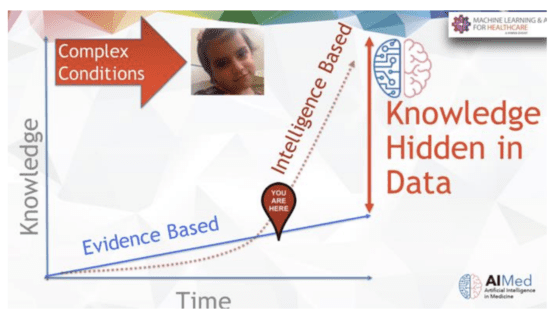Companies like Atomwise, Exscientia, InSilico Medicine, Insitro, HealX and Cyclica have been pursuing partnerships with big pharma along with the development of their own compounds. There are two main business models that we’re starting to see here. First, there’s the biotech startups that are using internal research and development to discover new drugs. Second, there’s the SaaS startups that are selling analytics software to pharma companies.
Neither of these two business models are in the driver’s seat yet, as neither has produced key drugs that are being used to treat patients. We’ve already talked about the quality and format of the data that exists in pharmaceutical databases. The repository of biomedical research data is enormous and, for the most part, digital. However, AI can’t use that data in its current form. The medical literature needs to be annotated, the key concepts extracted and the quality of the evidence ranked before AI can use that data to help with drug discovery. Given the quantity of medical literature out there, a crowdsourcing model could be the only feasible way to achieve this task.
There’s already a lot of activity in the industry, as well as a number of AI-designed drugs in the works. Startups that partner with big pharma vendors could find themselves on a shortcut to success, and these partnerships could help them to run proofs of concept into potential milestone payments for new drug candidates. These could exceed $1 billion, as we’ve seen with the InSitro-Gilead partnership, the Exscientia-Celgene partnership and the Atomwise-Hansoh Pharma partnership. Ultimately, they all aim to find specialized drugs focused on smaller diseases, super-responders to existing drugs and new indications. Two sets of data need to be digitized and structured: data from the historic drug experiments and the medical literature.
As we’ve already discussed, AI is great at spotting patterns that are hidden in large volumes of data and calculating the effect of small molecular iterations to predict efficacy and specificity. Within this field, the applications are often interrelated and include using AI to analyze clinical, scientific, patient and genomic data to get a better understanding of disease mechanisms, and using this to generate either novel drug candidates or to repurpose existing drugs for new diseases and therapeutic uses.
Once potential targets have been identified, AI is also being used to accelerate the drug design process by performing in-silico experimentation and conformational analysis on drug molecules to gain insights into the behavior and physical properties of the molecule prior to in-vitro and in-vivo testing.
AI can also be used for drug screening, the process which happens once a biological target has been identified. Typically carried out in vitro, this is a costly and time-consuming step that’s needed to identify the lead candidates for testing. Companies have already started using AI for primary and secondary assays which use computer simulations in silico. For example, Deep Genomics’ Project Saturn has created a library of 1,000 experimentally verified compounds by testing 69 billion molecules against a million targets.






